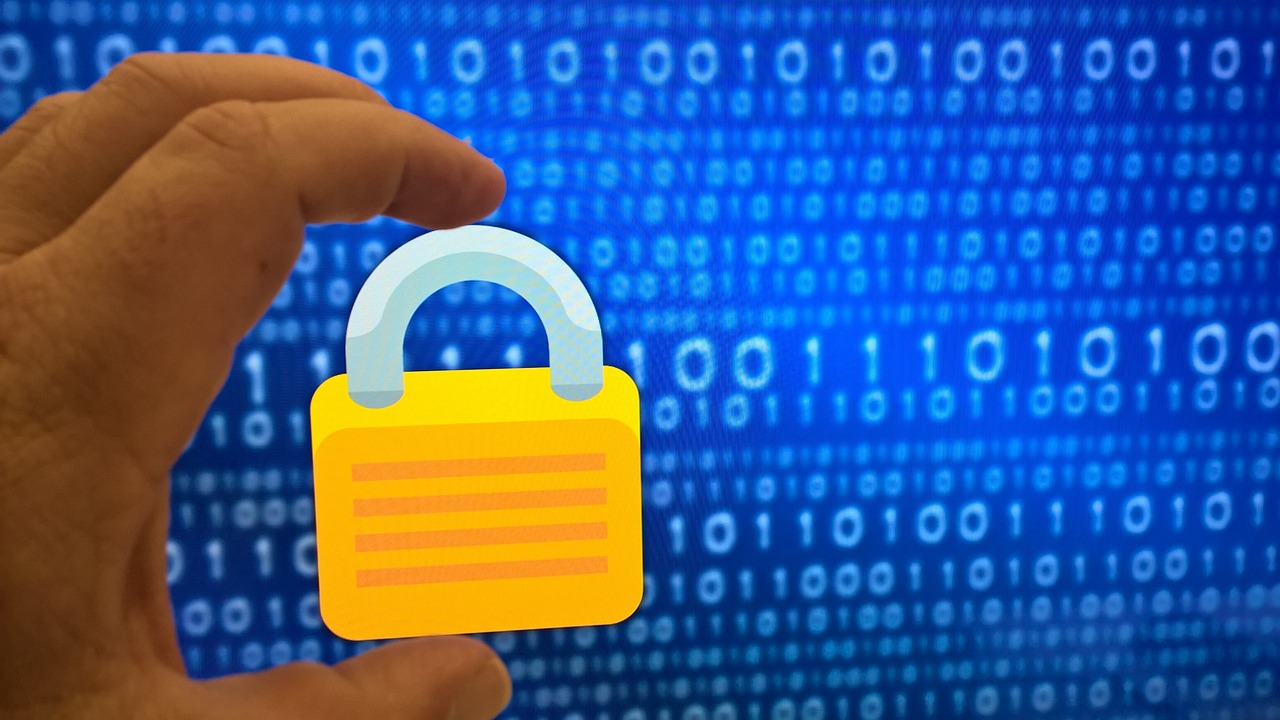Whaling attacks have become a major concern for organizations and individuals alike in the world of cybersecurity. These attacks, also known as executive phishing, target high-level executives and aim to steal sensitive information or money.
It is crucial to have proper whaling cyber awareness to protect yourself and your business from these sophisticated phishing techniques.
In this comprehensive guide, we will explore what whaling is in cybersecurity, how it works, and provide essential tips to enhance your whaling attack protection.
Table of Contents
What Is A Whaling Attack?

A whaling attack is a type of phishing attack that targets high-profile individuals, such as CEOs, CFOs, and other executives. The goal of a whaling attack is to trick the victim into providing sensitive information, such as their login credentials, credit card numbers, or Social Security numbers.
Whaling attacks are often more successful than traditional phishing attacks because they are targeted at individuals who have a higher level of authority and responsibility. These individuals are more likely to be targeted because they have access to sensitive information, and they are more likely to be fooled by a well-crafted phishing email.
The goal of a whaling attack is to trick the victim into providing sensitive information, such as their login credentials, credit card numbers, or Social Security numbers.
Whaling attacks are often more successful than traditional phishing attacks because they are targeted at individuals who have a higher level of authority and responsibility.
Whaling attacks are usually highly sophisticated and use methods that exploit established trust structures to fool the target.
Whaling emails are very often personalized, including details such as the target’s name, job title, or other relevant information that the criminals have collected from a variety of sources.
Understanding Whaling in Cybersecurity
Whaling, also known as CEO fraud, is an advanced phishing attack method that specifically targets high-ranking executives within an organization.
These attackers meticulously research their targets, gather information from various sources such as social media profiles, press releases, and company announcements, and then use this information to impersonate executives and gain access to sensitive company data or financial resources.
Whaling attacks require careful planning and execution, making them more sophisticated than traditional phishing attempts.
READ ALSO: Web Security Guide: Keeping Your Website Safe
How Whaling Attacks Work

Whaling attacks involve several stages, including extensive research, email spoofing, and social engineering tactics. Hackers identify their targets by scouring publicly available information about the organization and its executives.
Once they have gathered enough information, they create a fake but convincing email account that appears to be from a high-level executive.
These emails are carefully crafted to convey urgency, trust, and legitimacy. The attackers then send these emails to their targets, attempting to trick them into revealing sensitive information or making financial transactions.
Types of Whaling Attacks
Whaling attacks are a type of phishing attack that targets high-level individuals, such as CEOs, CFOs, and other executives.
The goal of a whaling attack is to trick the victim into providing sensitive information, such as their login credentials, credit card numbers, or Social Security numbers.
There are a number of different techniques that hackers use to carry out whaling attacks. These include:
- Email corruption: Hackers create sophisticated emails that appear legitimate, often impersonating CEOs or CFOs. These emails may request urgent money transfers or ask for sensitive information under the guise of a legitimate business transaction.

- Social media exploitation: Hackers utilize information from executives’ public social media profiles to craft personalized whaling attacks. By gathering specific details and personal connections from these profiles, they can create emails that appear trustworthy and relevant to the targets.
- Phone verification: Some attackers go a step further by following up their whaling emails with phone calls. This additional step aims to verify the email request and add an extra layer of authenticity to the attack.
- Email + follow-up phone call: Cybercriminals will often follow up on a whaling email with a phone call confirming the email request. This social engineering tactic both corroborates the email request and makes the victim complacent as they have also had a ‘real world’ interaction.
- Impersonating a trusted partner: The most recent and sophisticated whaling attacks have access to information about suppliers or partners of the target organization, especially if they advertise their partners such as charities, law firms, think tanks, or academic institutions. By impersonating a trusted partner, hackers can trick the victim into believing that the email is legitimate.
- Impersonating colleagues: Criminals will either compromise or spoof a colleague’s email address in order to trick other employees into believing the attack is a legitimate request. Often, this comes from a “senior” and is targeting a junior within the organization. By impersonating a colleague, hackers can take advantage of the trust that exists between colleagues and trick the victim into providing sensitive information.
- Whaling via social media: Social media provides cyber criminals with a means to research and contact senior executives. Victims are also usually less vigilant in social situations. Scammers may try to befriend the target or pretend to be a potential business partner, love interest, peer, or authority figure. By building a relationship with the victim, hackers can increase the chances of the victim falling for the attack.
- Baiting: Criminals may leave an infected USB drive at the target’s office or gym locker or even mail it to their home with the hopes that they will try to use it. Once the victim inserts the USB drive, the malware will be installed on their computer and can be used to steal sensitive information.
Whaling attacks are a serious threat to businesses of all sizes. By being aware of the different techniques that hackers use, businesses can take steps to protect themselves from these attacks.
READ ALSO: Email Security Guide: Safeguarding Your Digital Communication
Consequences Of A Whaling Attack
The consequences of falling victim to a whaling attack can be severe for both individuals and organizations. Some of the potential outcomes include:
- Financial Loss: Whaling attacks often involve attempts to transfer funds from company accounts to the attacker’s control. These fraudulent transactions can result in significant financial losses for the organization.

- Data Breach: Whaling attacks can lead to the exposure of sensitive company data, such as financial records, employee information, or intellectual property. This can have long-term consequences for the affected organization, including reputational damage and legal implications.
- Operational Disruption: Whaling attacks can disrupt normal business operations, especially if critical systems or accounts are compromised. This disruption can lead to downtime, loss of productivity, and additional expenses associated with recovery and remediation efforts.
How To Spot Whaling
There are a number of things that you can look for to spot a whaling attack. These include:
- A sense of urgency: Whaling attacks often try to create a sense of urgency by implying that there will be adverse consequences if the victim does not act immediately. For example, the email may claim that there is a problem with the victim’s account that needs to be fixed right away, or that there is a time-sensitive business opportunity that the victim needs to take advantage of.
- Spoofed email addresses and names: Whaling attackers often spoof the email addresses and names of legitimate people or organizations. This makes the email appear more legitimate and makes it more likely that the victim will trust it. For example, the email may appear to be from the CEO of the victim’s company, even though it is actually from a scammer.
- Requests for money transfers or personal information: Whaling attacks often involve requests for money transfers or personal information. This information can then be used to steal the victim’s identity or commit other crimes. For example, the email may ask the victim to wire money to a specific account, or to provide their Social Security number or credit card number.

- A domain age that does not match the domain age of the trusted correspondent: Whaling attackers often use domains that are only a few days or weeks old. This can be a red flag, as legitimate companies typically have domains that have been around for much longer.
If you receive an email that contains any of these warning signs, it is important to be very careful before responding. You should never click on any links in the email, and you should never provide any personal information.
Instead, you should contact the person or organization that the email claims to be from directly to verify that the email is legitimate.
Here are some additional tips to help you spot whaling attacks:
- Be suspicious of emails that you receive from unfamiliar senders.
- Do not open emails that contain attachments that you are not expecting.
- Do not click on links in emails that you are not sure about.
- Keep your software up to date.
- Use a firewall and antivirus software.
By following these tips, you can help to protect yourself from whaling attacks.
READ ALSO: What To Do If You’ve Been Scammed Online: A Comprehensive Guide
Examples Of Whaling Attacks
Whaling attacks are a serious threat to businesses of all sizes. In recent years, there have been a number of high-profile whaling attacks that have resulted in significant financial losses.

2015: A Hong Kong subsidiary of Ubiquiti Networks Inc. lost $47 million due to a whaling email attack targeted at a finance employee. The attacker posed as the CEO of Ubiquiti Networks and sent an email to the finance employee requesting a wire transfer of $47 million. The finance employee was fooled by the email and wired the money to the attacker.
2016: A criminal, posing as the CEO of Snapchat, tricked a high-ranking employee into giving the attacker employee payroll information. The attacker sent an email to the employee that appeared to be from the CEO of Snapchat. The email requested the employee’s payroll information, which the employee provided. The attacker then used the payroll information to steal the identities of several employees.
2017: A small business owner lost $50,000 to a man-in-the-middle whaling attack. The attacker intercepted an email from the business owner’s bank and sent a fake email that appeared to be from the bank. The fake email requested the business owner’s login credentials, which the business owner provided. The attacker then used the login credentials to access the business owner’s bank account and steal $50,000.
2018: A European cinema company called Pathé lost $21.5 million to attackers posing as high-ranking employees who emailed the CEO and CFO with highly confidential financial transaction requests. The attackers were able to trick the CEO and CFO into approving the fraudulent transactions, which resulted in a loss of $21.5 million for Pathé.

2020: A whaling attack that sent a malicious link to the co-founder of an Australian hedge fund with fraud resulted in the business closing down. The co-founder clicked on the malicious link, which installed malware on his computer. The malware gave the attackers access to the co-founder’s computer and allowed them to steal confidential financial information from the hedge fund. The hedge fund was forced to close down due to financial losses.
These are just a few examples of the many whaling attacks that have occurred in recent years. Whaling attacks are a serious threat to businesses of all sizes.
How To Protect Yourself From A Whaling Attack
Follow these steps to protect yourself from a whaling attack:
- Educate employees: The most important step in protecting yourself from a whaling attack is to educate your employees about the risks. Employees should be aware of the signs of a whaling attack and know how to respond if they receive a suspicious email. For example, they should be taught to look for things like poor grammar or spelling, urgent requests, and requests for sensitive information.
- Have your IT department carry out mock whaling exercises. This is a great way to test your employees’ knowledge of whaling attacks and to see how they would respond if they received a real one.

- Check the sender’s email address: When you receive an email, take a moment to check the sender’s email address. If the address doesn’t look legitimate, don’t click on any links or open any attachments. If you’re not sure if the address is legitimate, you can hover your mouse over the address to see the full email address. Also, check if it perfectly matches the company name and format to avoid falling for a spoof. Cybercriminals often spoof the email addresses of legitimate companies in order to trick people into thinking that the email is from a trusted source.
- Be careful what you share on social media: Cybercriminals can use information that you share on social media to target you with whaling attacks. Be careful what you share, and make sure that your privacy settings are set to private. For example, you should avoid sharing your full name, job title, and company information.
- Use anti-phishing software: Anti-phishing software can help to protect you from whaling attacks by blocking suspicious emails. Use a service that provides services such as URL screening and link validation. This can help to prevent you from clicking on malicious links in emails.
- Change the procedures at your organization so that two people have to sign off on payments. This can help to prevent unauthorized payments from being made in response to a whaling attack.
- Use DNS authentication services: DNS authentication services use DMARC, DKIM, and SPF protocols to identify whether an email sent from a specific domain can be trusted. This can help to prevent you from receiving emails that appear to be from a legitimate company but are actually from a cybercriminal.
- Use anti-impersonation software: Anti-impersonation software can help to identify the social-engineering-based techniques that are common to whaling emails and block them.
- Be aware that it is impossible to stay 100% safe from whaling attacks. Cybercriminals are constantly evolving their techniques, so it is important to be vigilant and to take steps to protect yourself.

- Use a personal information removal service: A personal information removal service can help protect you from whaling attacks by removing your personal information from public records. This will make it less likely that cybercriminals will be able to find your information and target you with a whaling attack. Examples include Incogni and DeleteMe.
READ ALSO: 6 Ways To Protect Your Business From Phishing Attacks
Whaling Cyber Awareness: Protecting Yourself and Your Business
To enhance whaling cyber awareness and protect yourself and your business from whaling attacks, it is crucial to implement a comprehensive cybersecurity strategy. Here are some essential measures to consider:
Employee Training and Education
Educating employees about the risks of whaling attacks and providing training on identifying and reporting suspicious emails is crucial.
Regular cybersecurity awareness training sessions can help employees recognize the signs of a whaling attack and understand the importance of following security protocols.
Implementing Multistep Verification

To prevent unauthorized access and fraudulent financial transactions, implementing multistep verification processes can provide an additional layer of security.
This can involve verifying requests for sensitive information or financial transfers through alternate communication channels or requiring approval from multiple individuals.
Developing Data Protection Policies
Establishing data protection policies that outline guidelines for handling sensitive information and restricting the sharing of critical data can help mitigate the risks of whaling attacks.
These policies should include measures such as prohibiting the transfer of files to personal email accounts and discouraging the use of public Wi-Fi networks for accessing company systems.
Social Media Education and Best Practices
Executives and employees should be educated about the risks associated with sharing sensitive information on social media platforms.
Implementing best practices, such as setting privacy restrictions on personal social media accounts and limiting the disclosure of work-related details, can help minimize the potential for social engineering attacks.

Utilizing Anti-Phishing Tools and Services
Leveraging anti-phishing software and managed security services can provide an added layer of protection against whaling attacks.
These tools can help detect and block suspicious emails, scan attachments and URLs for malware, and provide real-time threat intelligence to enhance overall cybersecurity posture.
Additional Protection Measures
- Regularly updating and patching software and systems to address vulnerabilities that attackers could exploit.
- Implementing strong password policies and encouraging the use of multi-factor authentication.

- Conducting regular security audits and penetration testing to identify potential weaknesses and vulnerabilities in the organization’s infrastructure.
- Encouraging employees to report any suspicious emails or incidents to the designated IT or security team.
Personal Information Removal Services: Incogni

To further reduce the risk of whaling attacks, it is essential to keep your personal information secure and minimize its availability to potential scammers.
Utilizing personal information removal services, such as Incogni, can help remove your personal data from the internet, making it less accessible to cybercriminals.
By reducing the level of personalization and effectiveness of a scam, these services can significantly lower the likelihood of a successful whaling attack.
Conclusion
Whaling attacks pose a significant threat to individuals and organizations, targeting high-level executives to gain access to sensitive information or financial resources.
Understanding what whaling is in cybersecurity and implementing comprehensive whaling cyber awareness measures can help protect yourself and your business from these sophisticated phishing techniques.
By educating employees, implementing security protocols, and utilizing anti-phishing tools, you can significantly enhance your defense against whaling attacks and maintain a strong cybersecurity posture.
Additionally, leveraging personal information removal services like Incogni can further minimize the risk of exposure to potential scammers. Stay vigilant, stay informed, and prioritize cybersecurity to safeguard your business from whaling attacks.
INTERESTING POSTS
- Dark Web 101: How To Access The Dark Web
- Today’s Most Common Threats Against Cybersecurity
- 5 Ways To Identify Phishing Or Fake Websites
- How To Secure Devices Against Phishing Emails
- The Intersection of AI and Privacy
- The Ultimate Guide to Using a VPN on Your iPhone – Tips and Tricks
- 5 Hidden Truths About Working From Home
About the Author:
Meet Angela Daniel, an esteemed cybersecurity expert and the Associate Editor at SecureBlitz. With a profound understanding of the digital security landscape, Angela is dedicated to sharing her wealth of knowledge with readers. Her insightful articles delve into the intricacies of cybersecurity, offering a beacon of understanding in the ever-evolving realm of online safety.
Angela's expertise is grounded in a passion for staying at the forefront of emerging threats and protective measures. Her commitment to empowering individuals and organizations with the tools and insights to safeguard their digital presence is unwavering.







